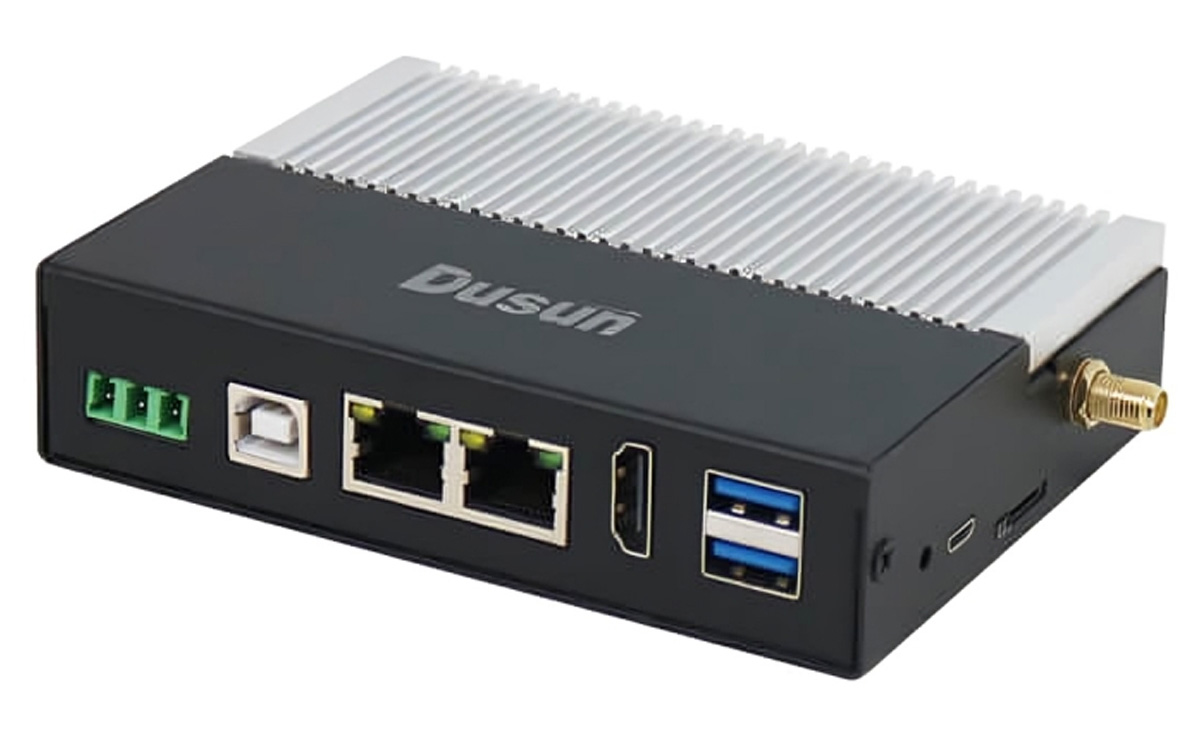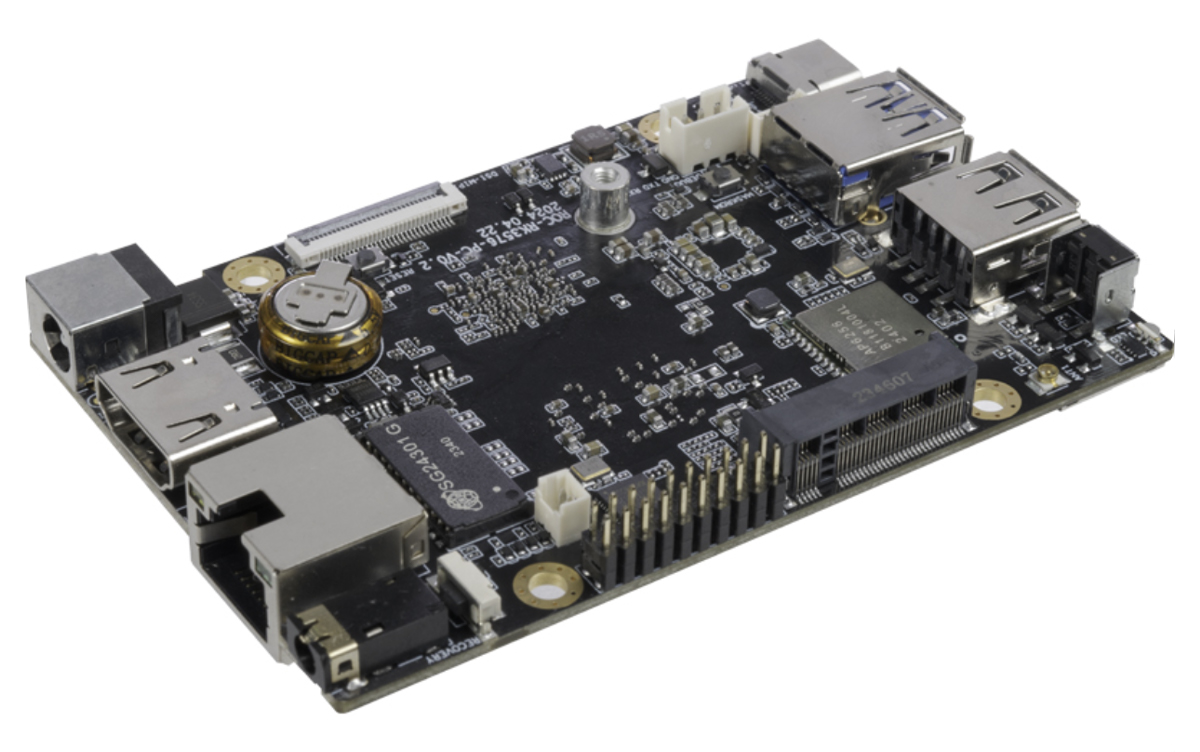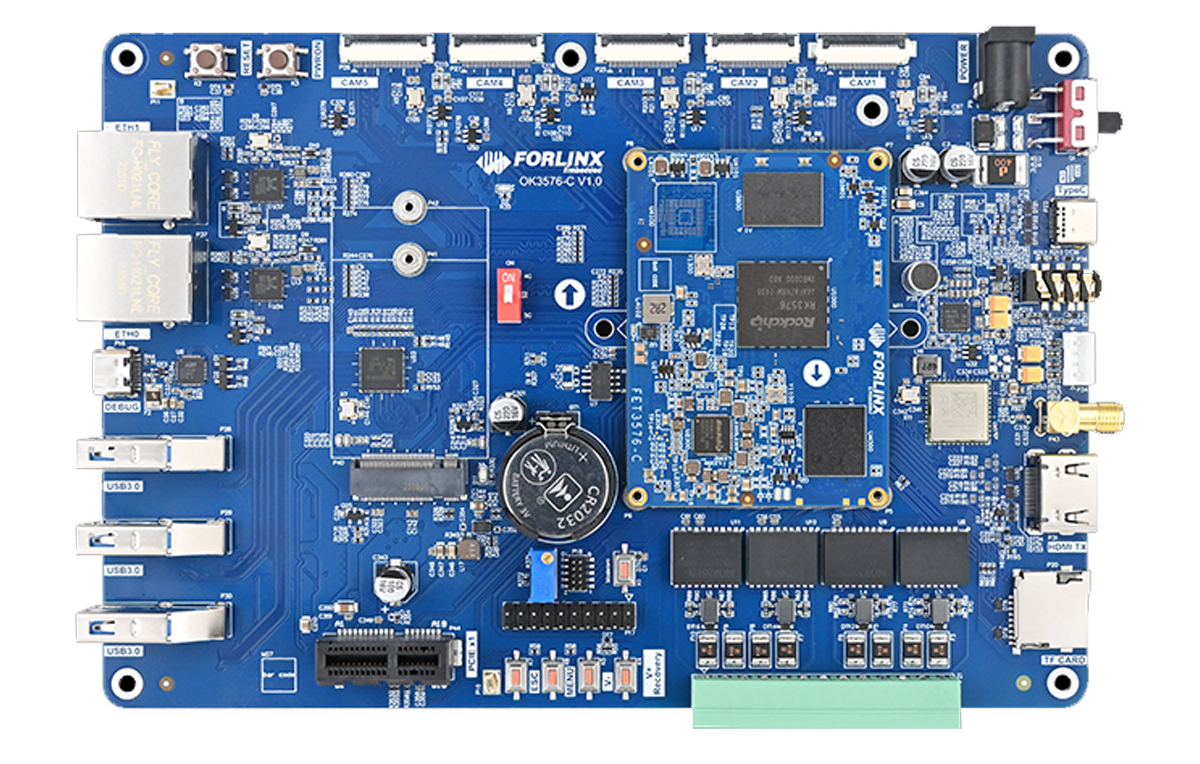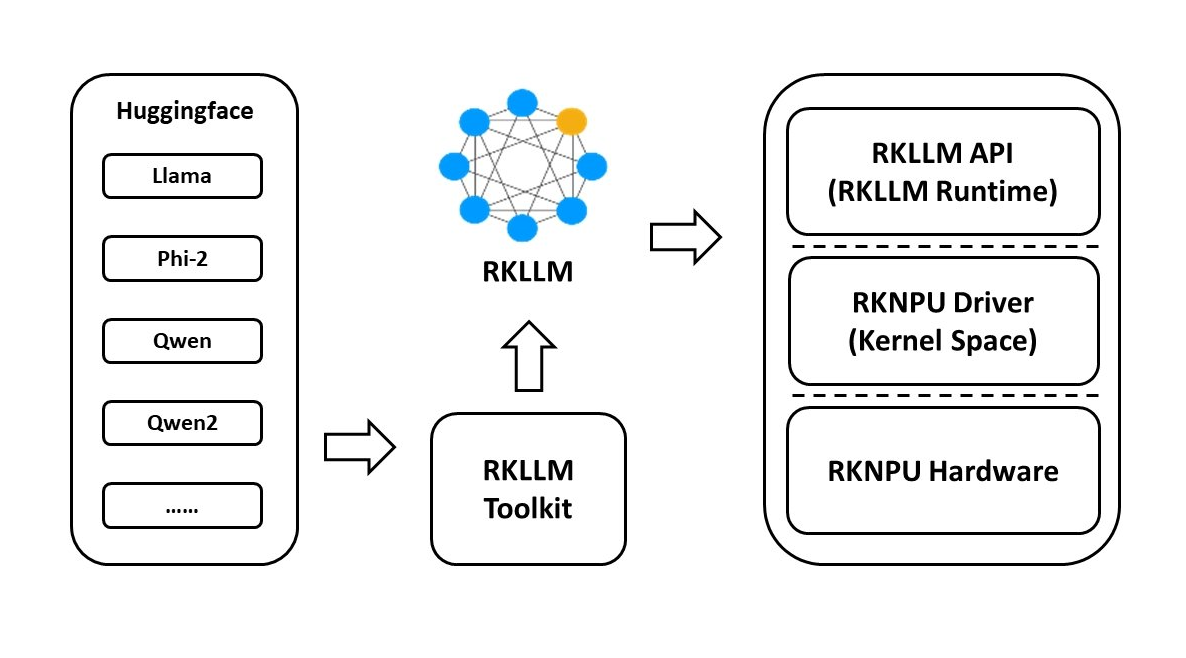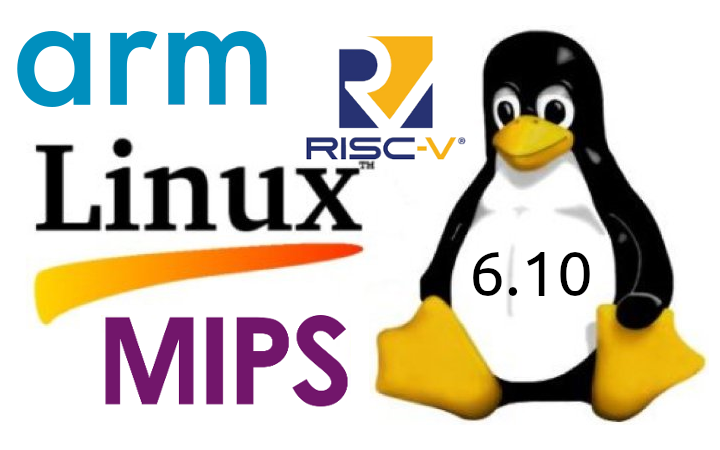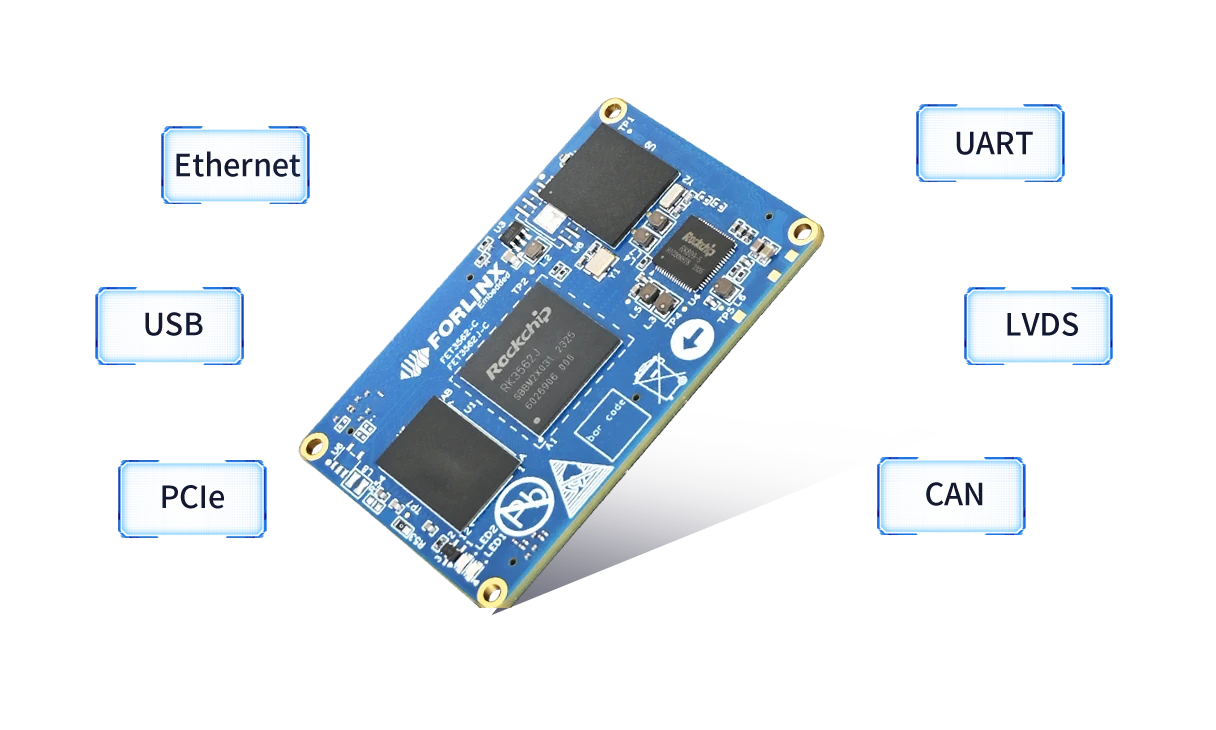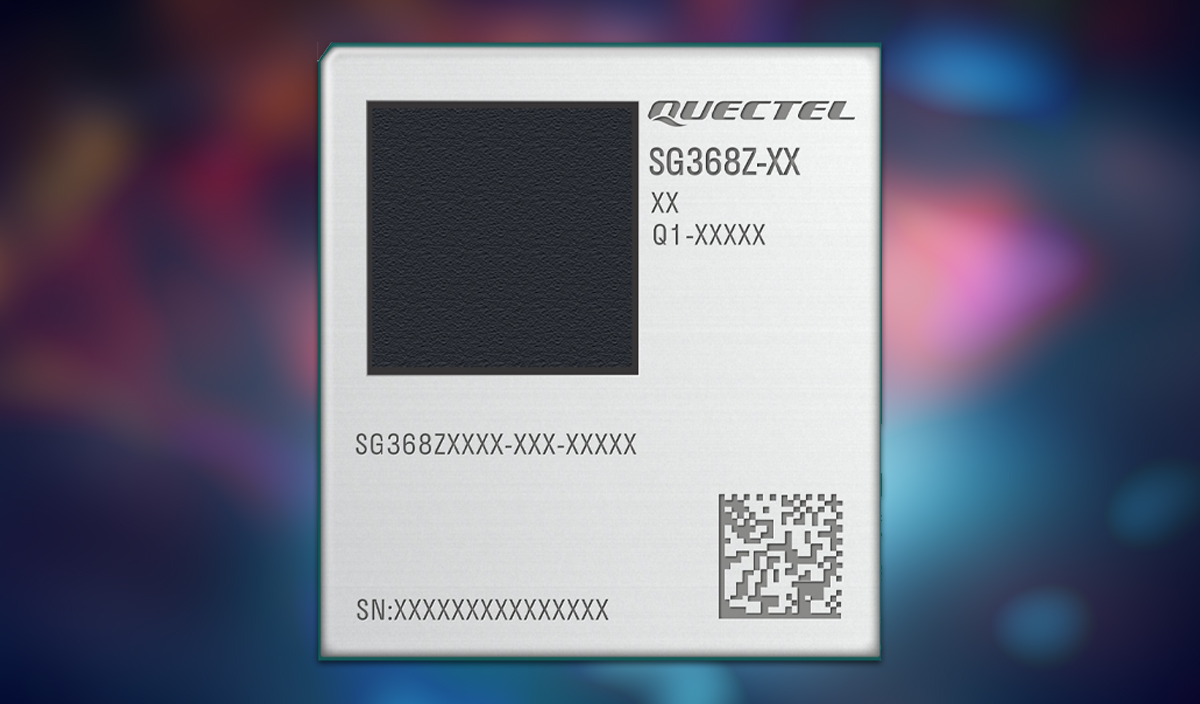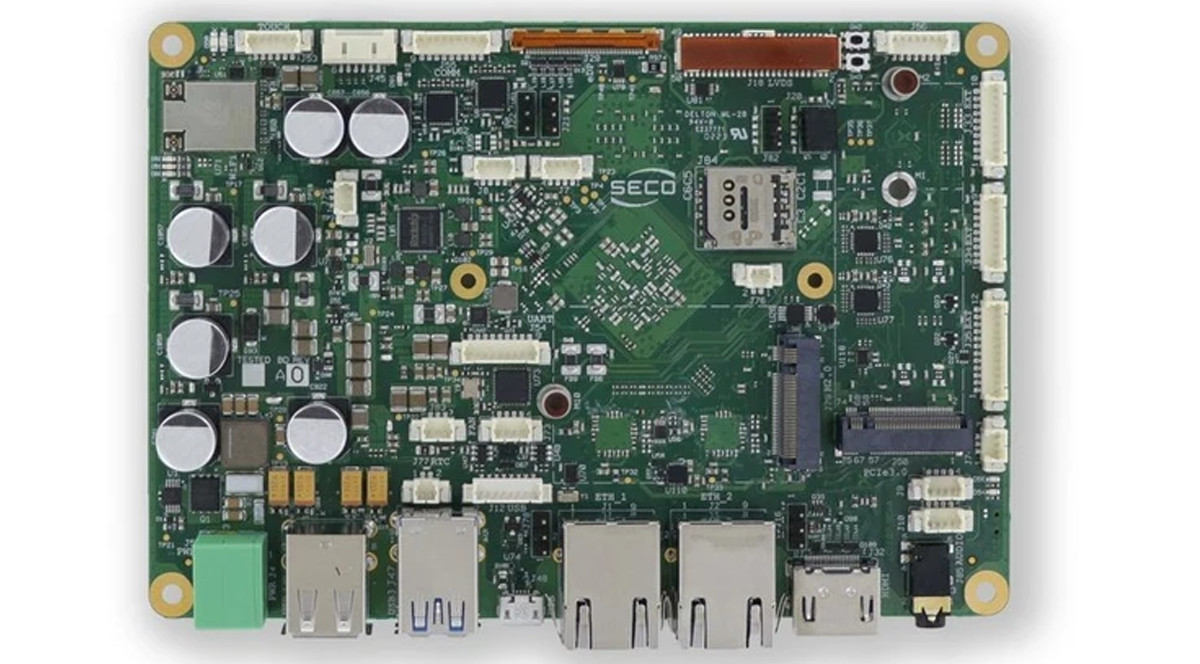Dusun has recently launched the DSGK-061 Smart VNC Edge Computing AI Box or DSGK-061 Edge AI Box for short. This new Edge AI gateway is powered by a Rockchip RK3568 quad-core processor with a 1 TOPS NPU for edge computing. It has a built-in VNC (Virtual Network Computing) application for remote management and supports various interfaces and communication protocols such as HDMI, USB 3.0, TTL serial, LAN/WAN, and WiFi, making it suitable for applications like industrial automation, smart manufacturing, and more. Previously we have written about similar Edge AI boxes like the Mixtile Edge AI box or Techbase iModGATE-AI, and some very powerful AI boxes with more than 30 TOPS NPU power like the Radxa Fogwise Airbox, the Firefly AIBOX-1684X, the Sipeed MaixBox M4N and more. Feel free to check those out if you are interested in similar products. Dusun DSGK-061 specifications: SoC – Rockchip RK3568 CPU – Quad-core Cortex A55 processor […]
Firefly ROC-RK3576-PC low-profile Rockchip RK3576 SBC supports AI models like Gemma-2B, LlaMa2-7B, ChatGLM3-6B
Firefly ROC-RK3576-PC is a low-power, low-profile SBC built around the Rockchip RK3576 octa-core Cortex-A72/A53 SoC which we also find in the Forlinx FET3576-C, the Banana Pi BPI-M5, and Mekotronics R57 Mini PC. In terms of power and performance, this SoC falls in between the Rockchip RK3588 and RK3399 SoCs and can be used for AIoT applications thanks to its 6 TOPS NPU. Termed “mini computer” by Firefly this SBC supports up to 8GB LPDDR4/LPDDR4X memory and 256GB of eMMC storage. Additionally, it offers Gigabit Ethernet, WiFi 5, and Bluetooth 5.0 for connectivity. An M.2 2242 PCIe/SATA socket and microSD card can be used for storage, and the board also offers HDMI and MIPI DSI display interfaces, two MIPI CSI camera interfaces, a few USB ports, and a 40-pin GPIO header. Firefly ROC-RK3576-PC specifications SoC – Rockchip RK3576 CPU 4x Cortex-A72 cores at 2.2GHz, four Cortex-A53 cores at 1.8GHz Arm Cortex-M0 MCU at 400MHz GPU […]
Forlinx FET3576-C Rockchip RK3576 SoM powers feature-rich OK3576-C board for AIoT applications
Forlinx FET3576-C SoM is a new System-on-Module built around the Rockchip RK3576 SoC which features four Arm Cortex-A72 and four Cortex-A53 cores made from a 22nm lithography process. The SoM is available with 2GB or 4GB of LPDDR4 RAM option and can be equipped with up to 32GB of eMMC storage. Additionally, it has 6 TOPS NPU power and supports standard peripherals like GbE Ethernet, Wifi, Bluetooth, LVDS, MIPI DSI, and much more. All these features make this device useful for IoT, edge computing, digital signage, and many other applications. The new FET3576-C SoM and its OK3576-C development board look very similar to the Forlinx FET3562J-C SoM and related board we covered earlier this month. But the main difference between the two is that the new one is built with the RK3576 SoC whereas the old one is built around the Rockchip RK3562(J) SoC. Previously we also saw that the […]
Rockchip RKLLM toolkit released for NPU-accelerated large language models on RK3588, RK3588S, RK3576 SoCs
Rockchip RKLLM toolkit (also known as rknn-llm) is a software stack used to deploy generative AI models to Rockchip RK3588, RK3588S, or RK3576 SoC using the built-in NPU with 6 TOPS of AI performance. We previously tested LLM’s on Rockchip RK3588 SBC using the Mali G610 GPU, and expected NPU support to come soon. A post on X by Orange Pi notified us that the RKLLM software stack had been released and worked on Orange Pi 5 family of single board computers and the Orange Pi CM5 system-on-module. The Orange Pi 5 Pro‘s user manual provides instructions on page 433 of the 616-page document, but Radxa has similar instructions on their wiki explaining how to use RKLLM and deploy LLM to Rockchip RK3588(S) boards. The stable version of the RKNN-LLM was released in May 2024 and currently supports the following models: TinyLLAMA 1.1B Qwen 1.8B Qwen2 0.5B Phi-2 2.7B Phi-3 […]
Linux 6.10 Release – Notable changes, Arm, RISC-V, and MIPS architectures
Linux Torvalds has announced the release of Linux 6.10 on LKML: So the final week was perhaps not quote as quiet as the preceding ones, which I don’t love – but it also wasn’t noisy enough to warrant an extra rc. And much of the noise this last week was bcachefs again (with netfs a close second), so it was all pretty compartmentalized. In fact, about a third of the patch for the last week was filesystem-related (there were also some btrfs latency fixes and other noise), which is unusual, but none of it looks particularly scary. Another third was drivers, and the rest is “random”. Anyway, this obviously means that the merge window for 6.11 opens up tomorrow. Let’s see how that goes, with much of Europe probably making ready for summer vacation. And the shortlog below is – as always – just the last week, not some kind […]
Forlinx FET3562J-C SoM features Rockchip RK3562(J) SoC with 1 TOPS NPU, dual Ethernet, camera, display interfaces
The Forlinx FET3562J-C is a Rockchip RK3562/RK3562J powered System-on-Module (SoM) built with a 22nm process and features four high-performance ARM Cortex-A53 cores running at up to 2GHz. It also can support up to 2GB LPDDR4 RAM and can be configured with up to 16GB eMMC storage. Additionally, it has 1 TOPS NPU and standard peripherals like Ethernet, Wifi, Bluetooth, LVDS, MIPI DSI, and much more. All these features make this SoM useful for IoT, automation, and consumer electronic applications. Previously, we have seen Forlinx launch similar SoM with development boards such as the Forlinx RZ/G2L, the FET-MX9352-C, the OK335xS-II and much more feel free to check those out if you are interested in the topic. Forlinx FET3562J-C SoM and carrier board specifications SoM Specifications SoC (one or the other) Rockchip RK3562J – ARM Cortex-A53 quad-core @ 1.8GHz Rockchip RK3562 ARM Cortex-A53 quad-core @ 2.0 GHz NPU – 1 TOPS INT8 […]
Quectel SG368Z WiFi 5 and Bluetooth 4.2 smart module is built around Rockchip RK3568 SoC
The Quectel SG368Z Smart Module is an all-in-one hardware package built around a Rockchip RK3568 AI SoC that combines computing, graphics, storage, and connectivity in a compact form factor. The LGA module offers WiFi 5 and Bluetooth 4.2 connectivity, dual gigabit Ethernet networking, various video output options (HDMI, LVDS, RGB, MIPI, eDP), USB, PCIe, and many other features making it suitable for applications like smart homes, wearables, and industrial automation. Previously we have seen Quectel introduce various communication modules like the Quectel BG95-S5 5G, the Quectel KG200Z LoRa the Quectel RG255G RedCap IoT Module, and the Quectel CC660D-LS IoT-NTN module, but this is the first time we have seen Quectel release a Smart Module which can be certainly be considered as a SoM in a LGA package. Quectel SG368Z Smart Module specifications: SoC – Rockchip RK3568 CPU – Quad-core Cortex A55 processor at up to 2.0 GHz GPU – Mali G52 […]
SECO SBC-3.5-RK3568 – A Rockchip RK3568 3.5-inch SBC with dual gigabit Ethernet
SECO SBC-3.5-RK3568 is a feature-rich 3.5-inch SBC powered by a Rockchip RK3568 quad-core Cortex-A55 AI SoC which includes up to 4GB DDR4-3200 memory, 64GB eMMC 5.1 flash, three display interfaces (HDMI, LVDS, eDP), dual gigabit Ethernet, and various expansion headers for industrial applications. Additionally, it also features, Wi-Fi 802.11 a/b/g/n/ac, Bluetooth 5.0, and LTE support via M.2. USB connectivity includes two USB 3.0 Type-A, and multiple USB 2.0 ports with OTG, alongside RS-232, RS-422, RS-485, and TTL UART ports and more. Previously we have written about similar SBCs powered by the Rockchip RK3568 SoC like the AAEON RICO-3568, the RK3568 Tinker Board 3N, the Radxa ROCK 3B and many others feel free to check those out if you are interested in the topic. SECO SBC-3.5-RK3568 Specifications: SoC – Rockchip RK3568 CPU – Quad-core Cortex A55 processor at up to 2.0 GHz GPU – Mali G52 GPU with support for OpenGL ES 1.1/2.0/3.2, […]


